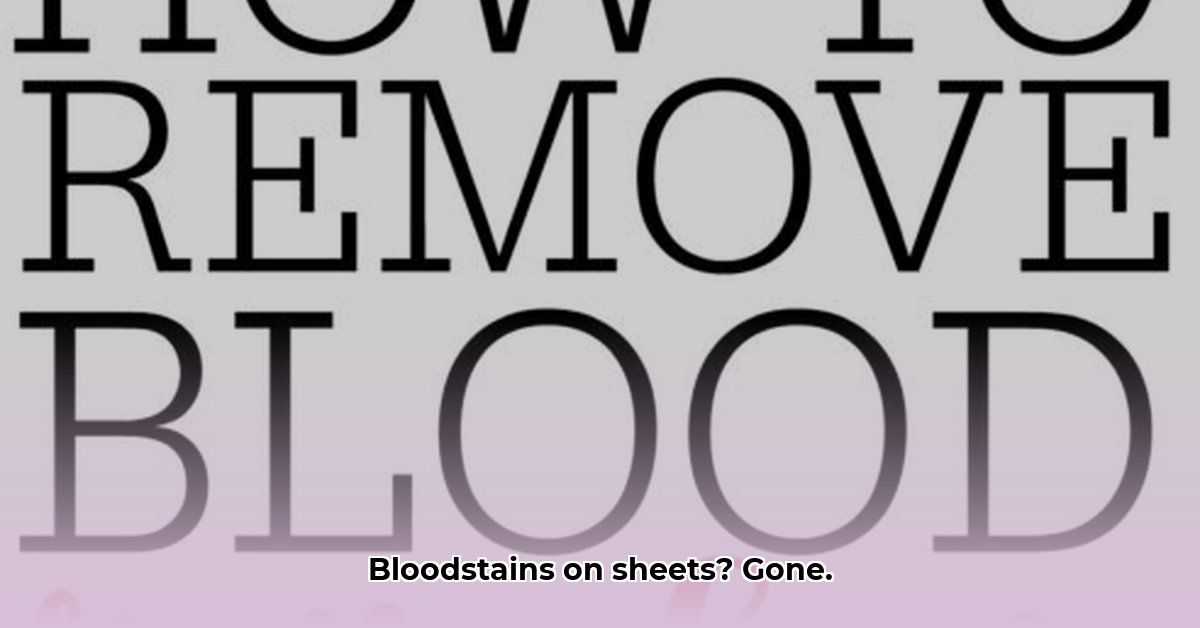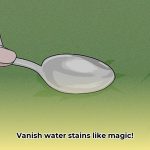Banishing Bloodstains: A Practical Guide
Finding blood on your sheets can be unsettling, but don’t panic! Removing bloodstains, whether fresh or dried, is entirely possible with the right approach. This guide provides simple, effective methods to restore your sheets to their pristine condition.
Fresh Bloodstains: Act Fast!
Fresh blood is easier to remove. Cold water is your best friend here. Hot water sets stains, making them much harder to remove.
- Rinse: Immediately rinse the stained area under cold running water, ideally from the back of the fabric to push the blood out.
-
Choose a Cleaning Agent:
- Hydrogen Peroxide: Highly effective, especially on white sheets, but it can bleach colored fabrics. Always test on a hidden area first.
- White Vinegar: A gentle and readily available option, safe for most colors. Vinegar’s acidity may help to break down blood proteins, but it might not be as strong as other choices for heavier stains.
- Laundry Detergent: Your regular detergent can be surprisingly effective, particularly for delicate fabrics and mild stains.
- Stain Remover Stick: Convenient for targeted application, with effectiveness possibly varying by brand.
-
Apply and Blot: Apply your chosen cleaning agent and let it sit for 20-30 minutes. Gently blot (don’t rub!) with a clean cloth.
- Launder: Wash the sheets in cold water with your regular detergent. Air dry if possible, as dryer heat can set any remaining stain. If the stain persists, repeat the process before drying.
Dried Bloodstains: A Little More Effort
Dried bloodstains require more work, but they’re not unbeatable.
- Soak: Submerge the stained area in cold water for several hours or even overnight. This rehydrates the blood and loosens it from the fibers.
-
Pre-Treat:
- White Vinegar Soak: Soak in equal parts water and white vinegar for 30 minutes.
- Laundry Detergent Paste: Make a thick paste and apply it directly to the stain for 10-15 minutes.
- Hydrogen Peroxide (with caution): Apply directly, but test on an inconspicuous area first for colorfastness. Hydrogen peroxide can sometimes react differently with various dyes, so caution is advised.
- Borax Solution: Prepare according to package instructions for a powerful natural cleaning soak.
-
Gentle Scrubbing (Optional): If needed, gently scrub with a soft-bristled brush after pre-treating.
- Blot and Launder: Blot with a clean, damp cloth and wash in cold water with detergent. Again, air dry. Repeat if necessary.
Beyond Sheets: Mattress, Comforter, and DIY Solutions
Mattress and Other Bedding
- Mattress: For fresh stains, spritz with cold water and blot. For dried stains, try a paste of cornstarch, hydrogen peroxide, and salt. Let it dry completely, then brush off. Multiple applications might be needed. A mattress protector is highly recommended to prevent future issues.
- Comforter/Mattress Protector: Wash separately in cold water, following the steps for sheet washing.
DIY Stain Removal Arsenal
- Baking Soda Paste: Mix baking soda with water to form a paste, apply to the stain, let dry, and brush off. The gentle abrasiveness of baking soda may help lift the stain. Some individuals have observed positive results with this method, although further research is ongoing to understand its full efficacy.
- Salt and Soap Scrub: Combine salt and dish soap for a gentle yet potentially effective scrub. Apply to the dampened stain, let sit, and rinse thoroughly. The salt could potentially help absorb and lift the stain, while the dish soap aids in breaking down organic matter, but the effectiveness may vary depending on the specific fabric and stain.
- Baking Soda and Hydrogen Peroxide Spray: Mix equal parts baking soda, hydrogen peroxide, and water. Spray on the stain, let sit, and rinse. Always test hydrogen peroxide in an inconspicuous area first due to its potential bleaching effect, which can depend on the fabric’s dye and the concentration of hydrogen peroxide.
Preventing Future Stains
A waterproof mattress protector is your best defense. Consider keeping a spray bottle of cold water and clean cloths near your bed for immediate action in case of accidents.
“Someone once told me that salt can help with bloodstain removal too. Apparently, you mix it with cold water to make a paste and apply it to the stain.”
While anecdotal evidence suggests salt may be helpful, scientific studies on its effectiveness are limited.
Important Considerations:
- Always test any cleaning solution on an inconspicuous area first.
- The effectiveness of these methods can vary depending on fabric type, stain age, and other factors.
- For delicate fabrics or stubborn stains, professional cleaning might be necessary.
- Research into stain removal is ongoing, so new and improved methods are constantly being developed.
This guide offers a comprehensive starting point. While these methods are generally effective, individual results may vary. Always prioritize fabric care instructions. Ongoing research continues to explore new avenues for stain removal.
- How to Remove Water Stains from Fabric: A Complete Guide - April 26, 2025
- How to Get Motor Oil Out of Clothes: Proven Methods & Expert Tips - April 26, 2025
- How to Get Deodorant Out of Black Shirts: Easy Stain Removal Guide - April 26, 2025










